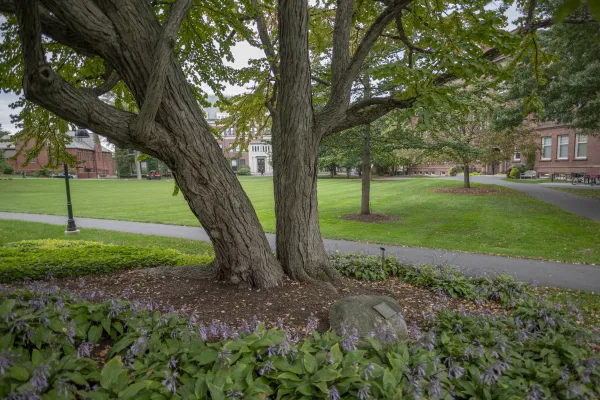A First-of-its-kind Tree Risk Management Plan
Botanic Garden - Leaflet

Published June 5, 2023
Leaflet 2022
As Smith has grown over the decades, the challenges of caring for the trees that create our sense of place have become more intense. To meet these challenges, the Botanic Garden of Smith College has built a team of highly trained staff arborists.
Our arborists are dedicated to maximizing the health of our trees, as well as ensuring that the inherent risk our trees pose is within the tolerance of our community. Living with big trees means accepting some risk that storms and hidden weakness will result in part or all of a tree falling to the ground and causing harm. Over the last three years our arborists developed an innovative approach to managing that risk, resulting in our Tree Risk Management Plan.
In developing the plan, the botanic garden sought guidance from local and national peer institutions as well as the International Society of Arboriculture, but we were unable to find a single example of a formal tree-risk plan. Most institutions took the same informal approach as we had in the past: If you notice a problem, you try to fix it. We knew we could do better, so we began crafting a formal, proactive, documented approach that incorporates the latest tree-risk assessment standards.
Our plan lays out strategies and action steps to monitor, detect, and reduce risk. It ensures that every arboretum tree over 20 feet tall receives an annual risk assessment. It also outlines the approaches our arborists take in response to extreme weather events, and incorporates monitoring into our daily work. Our arborists conclude a tree assessment with either a high degree of confidence that the tree presents low risk to our community or with a plan to mitigate any perceived risk with appropriate haste. Actions and communications are documented and follow the latest thinking and standards in professional arboriculture.
We will present this new methodology to botanic garden leaders at the American Public Gardens Association national convention, and we plan to share the document freely with other institutions. We hope it will be a catalyst for similar plans within our professional community, and that we can all learn from each other to ensure the best outcomes for our trees.